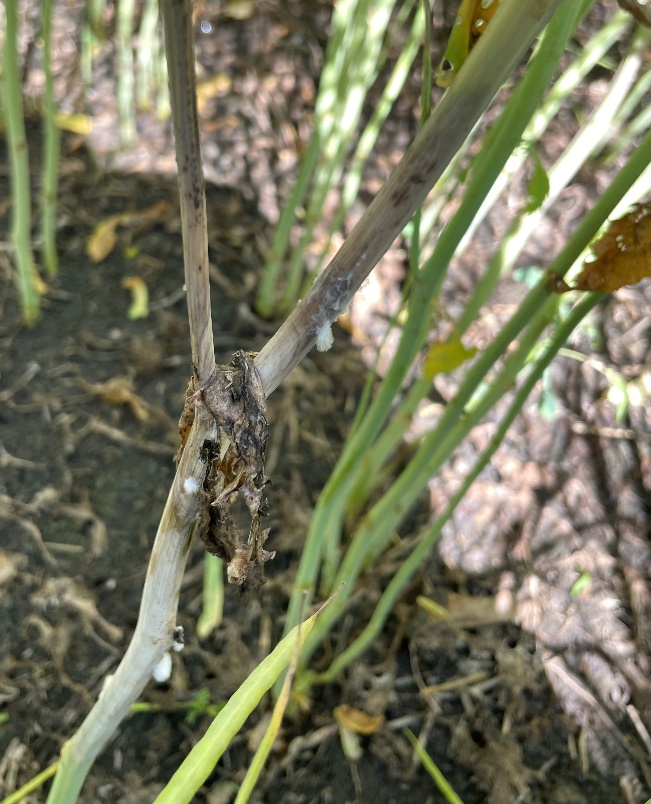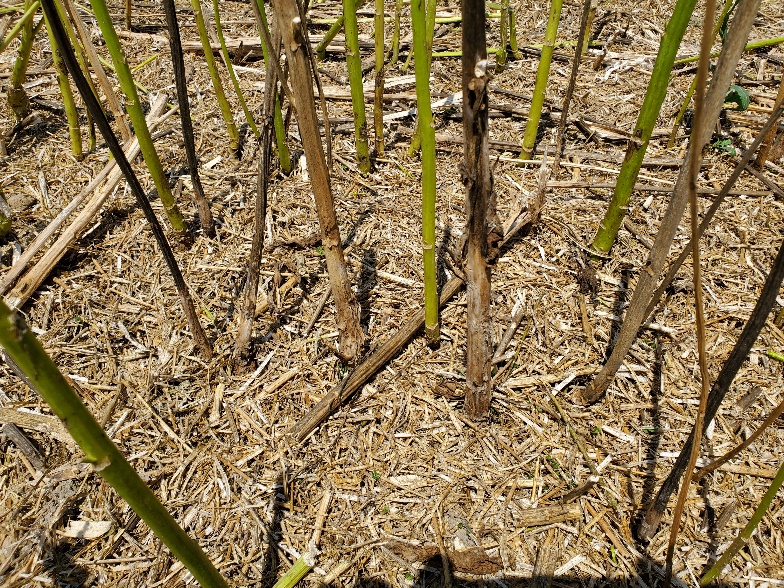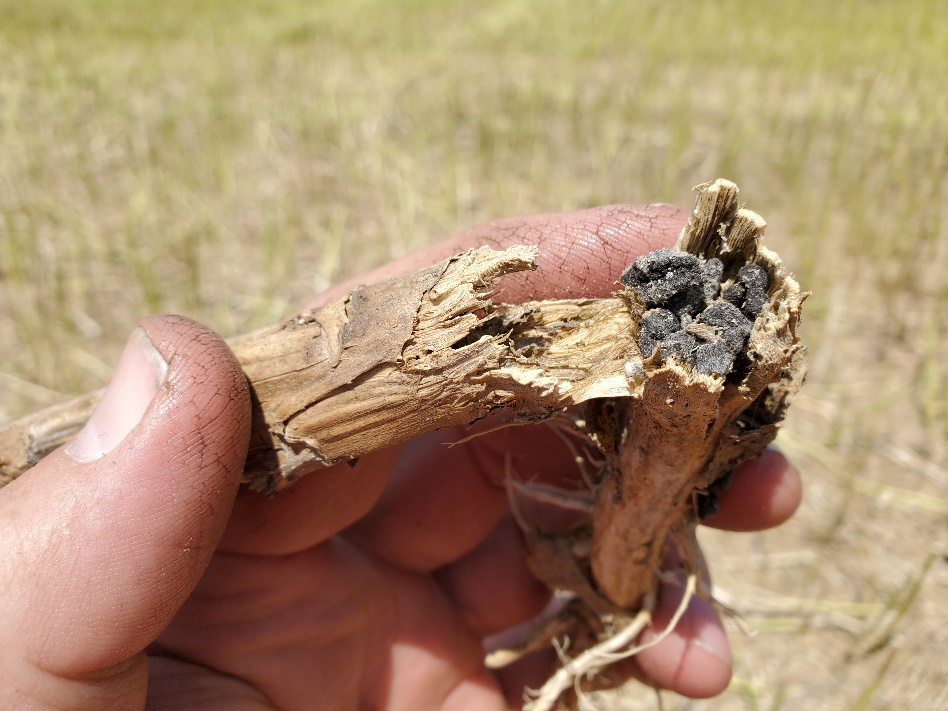There is a high risk of white mould infection in both spring and winter canola in Ontario. Ideal canola-growing weather can create a thick, tall canopy that is often moist and humid, which is ideal for white mould development. A preventative fungicide application during flowering has good return on investment in Ontario.
Life Cycle
White mould overwinters as sclerotia. Moist conditions cause the sclerotia to germinate and release spores which infect dying tissues, such as flower petals. Spores colonize flower tissue, and the disease enters other healthy plant tissues when infected flower petals land on leaves or stems. Infection can then rapidly spread across neighbouring plants in the field. New sclerotia form inside the plant stems. Optimum conditions for white mould are temperatures of 15 to 25°C and a moist, humid environment.
Identification
Symptoms begin as water-soaked lesions on the stems that may have black or dark grey spots at the center (Figure 1). Lesions expand and become grey-ish white, sometimes ringed in black. Lesions often first appear in the leaf axils where infected flower petals have landed. Cottony growth appears on stems (Figure 2). The plants ripen prematurely, and stems become bleached or straw-coloured (Figure 3). Looking out across the canopy, areas of white mould will appear as patches of bleached or straw-coloured plants within the green crop. Infected plants may lodge. At harvest, black sclerotia bodies can be found inside stems (Figure 4).

Figure 1. Water-soaked lesions in leaf axils are the first sign of white mould infection. Photo credit: Tanja Seed.

Figure 2. Cottony growth on stems is a clear sign of white mould. Photo credit: Tanja Seed.

Figure 3. Infected plants ripen prematurely and have bleach or straw-coloured stems compared to green, uninfected plants. Photo credit: Phil Deschamp.

Figure 4. Black sclerotia bodies can be found within the stem of infected plants at the end of the season. Photo credit: Phil Deschamp.
Preventative Management with Fungicides
Fungicides are applied preventatively, before white mould symptoms appear. Fungicide labels state that application should occur at 20-50% bloom. Check the growth stage of plants in multiple areas.
When flower petals begin to drop at 30% bloom, fungicide applications provide the best control of white mould. Petal drops occurs about 6 to 12 days after first flower. In spring canola, there are approximately 20 open flowers on the main stem at 30% bloom but there may be more in winter canola; this data is not available. At 50% bloom, pods are beginning to form on the main stem. There is unlikely to be an economic advantage to applying fungicide beyond 50% bloom. Flowering can last up to 3 weeks.
The fungicides registered in Ontario for white mould management in canola can be found on the Crop Protection Hub.